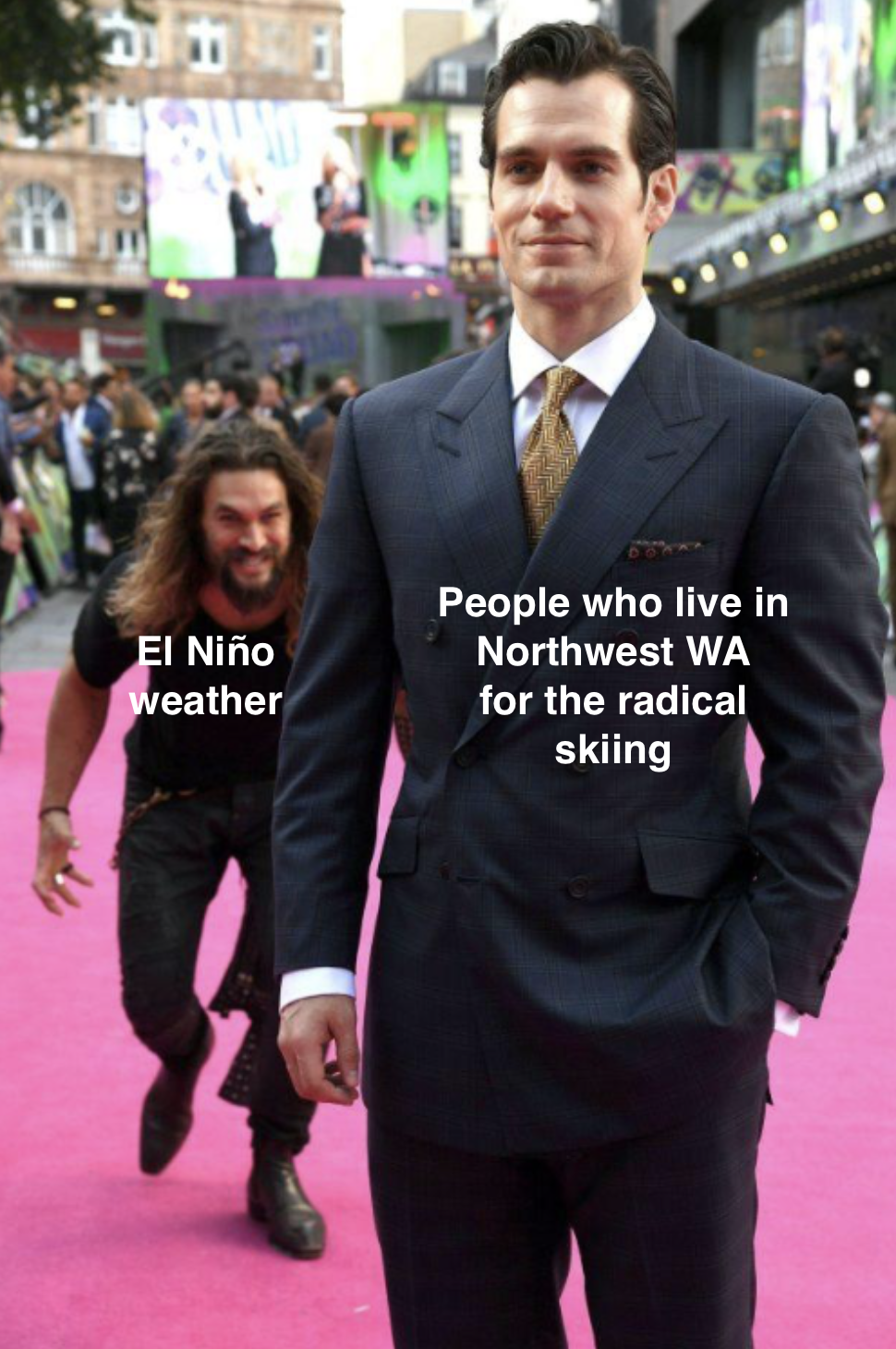Alas, complaints about the rain have given way to complaints about the heat. As Northwest Washingtonians, we aren’t used to constant heat, but climate change might require us to adapt. Summer 2023 may be a long one. On top of rising global temperatures, the World Meteorological Organization estimates the likelihood of an El Niño developing in May or June at 60%, with the probability increasing to 80% by October. To boot, climate change makes El Niño patterns more likely to develop — and be more extreme when they do.
What is an El Niño? What are the effects of El Niño?
El Niño is a weather pattern that occurs in the Pacific Ocean, usually every 3 to 5 years. During this time, unusual winds cause warm surface water from the equator to move east, toward Central and South America. During El Niño, the southern part of Alaska and The Pacific Northwest tends to be warmer and drier than average, whereas the Central and Southern regions of the U.S. tend to be wetter and cooler than average. El Niño typically peaks around December and may lead to a hotter, drier year following. Extreme weather grows more and more likely as carbon dioxide and — perhaps particularly important — methane levels in the atmosphere increase from natural gas and other fossil fuels. When it coincides with an extreme pattern like El Niño, that means “wetter” can turn to flooding and “drier” can turn to lower water supplies for people, fish, and farms.
For us in the Pacific Northwest, an El Niño year can mean a long summer and a dry winter. That could mean less rainfall and less snowpack in the North Cascades. Sorry ski bros. These conditions can cause droughts and increase the risk of wildfires in 2024.

How to prepare for summer and for the (likely) El Niño year ahead
Increasingly hot summers and El Niño years can be rough on us, but there are a few things we can do to prepare:
- Whatever you do, limit your oven usage. You might as well start a campfire in your living room, especially since many kitchen vents don’t even go outside, which is a health risk if you have gas appliances. Air fryers are a great alternative — they are quicker and don’t create as much heat. You can also cook outside. Grilling and hot weather are a match made in… well not heaven. But it’s a great way to keep the heat out of your home.
- It’s time to finally give your parents some (more) grandkids and become a plant parent. Plants also cool the landscape and homes through a process known as transpiration. When the surrounding atmosphere heats up, plants will often release excess water into the air from their leaves. By releasing evaporated water, plants cool themselves and the surrounding environment. It’s like sweating but not stinky. They are also great for your mental health! There really is no downside to making your home a jungle, unless you have pets who enjoy eating their greens a little too much. And if you’re worried that you don’t have a green thumb, start with easy plants like pothos and snake plants. You got this!If you are fortunate enough to own a home, we have news for you — lawns are out and native landscaping is in. Native plants are adapted to the local climate and soil conditions where they naturally occur. Native plants do not require fertilizers and require fewer pesticides than lawns. They require less water, which during an El Niño year in the Pacific Northwest is important. Native plants also have deeper root systems that can significantly reduce water runoff. They also sequester carbon and filter pollution making them a climate change hero!
- Open your windows at night to let in that cool air. When the day begins to heat up, close the windows and blinds. Think cave. Turn on the ceiling fans and ground fans and get a nice flow going. A good tactic for blocking heat is putting up cardboard in windows that get direct sunlight (wrap it in foil if you want even better heat deflection).
- Heat pumps! Only 53% of homes in Washington have air conditioning. This made sense when many of the homes were built and temps in the triple digits were unheard of, but times (and the climate) are changing. Heat pumps, which are essentially air conditioners with a reversing valve that lets them also heat indoor spaces, are an excellent energy efficient alternative to air conditioning and gas furnaces. They can be a bit costly to install, but can significantly curb your energy bill and make you less reliant on fossil fuel energy. With federal incentives from the Inflation Reduction Act and state dollars newly allocated from Climate Commitment Act funding, we’re working on lowering the upfront cost barrier for low and middle-income families.
- Don’t forget about your pets! If you’re hot, it’s a safe bet that they’re hot as well. To help keep them cool take them to the lake or mist them throughout the day, good luck cat owners. Remember the asphalt can be significantly hotter than the outside temperature so protect their little feet.
- Stay hydrated. It’s surprisingly easy to forget!
- This one’s easy — eat ice cream. Check out this Bellingham Ice cream shop called The Selkie Scoop. Also dogs like ice cream. You can freeze little bowls of plain yogurt and peanut butter to make a cheap puppy popsicle.
And don’t forget to speak up for regional solutions to climate change. These hot summers are only going to get worse as global temperatures rise. When hundreds of people in a community speak up, it really makes a difference — we’ve proven it time and again in Northwest Washington.
